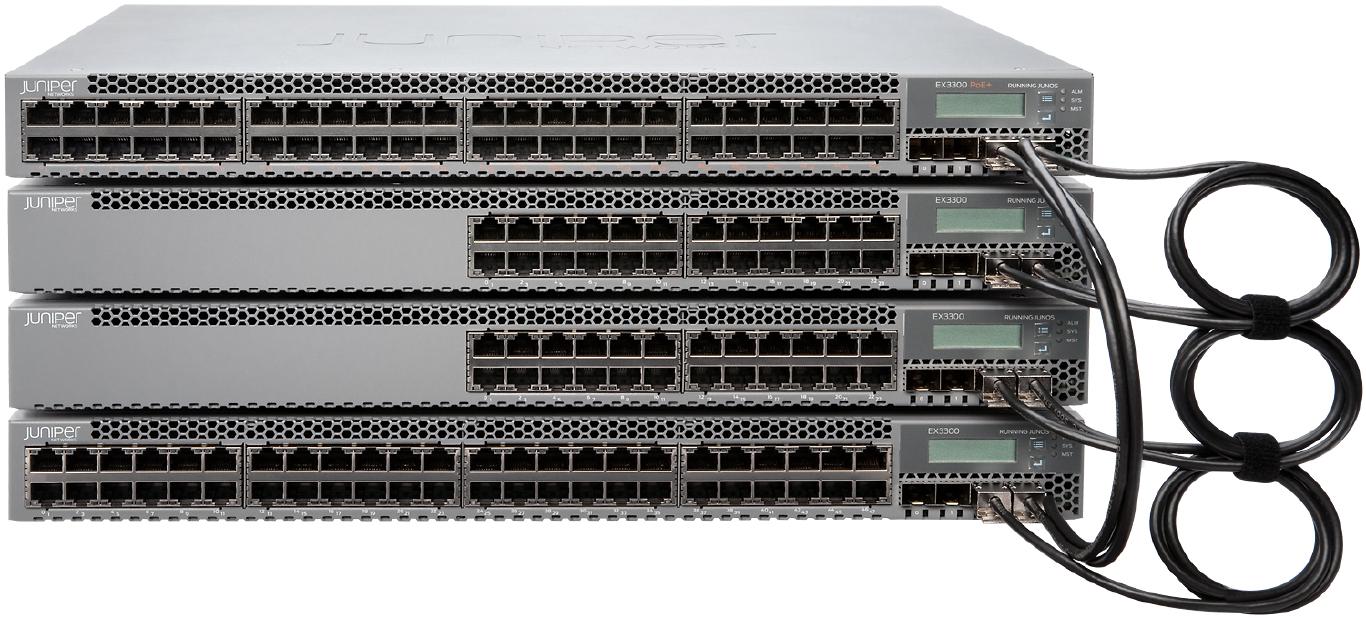In this article I will cover the following sublects:
- What is Juniper
- How the devices are structured
- JunOS
What is Juniper
Juniper is the second largest supplier of networking hardware. I will only write about Juniper Routers in the Enterprise envoirement. I still want to give you an overview of the existing devices.
Juniper Routers exist in the Series E-, J-, M-, MX-, ACX- und T. For very series and model there are different usecases.
The J- series for example is used mostly to connect smaller branch offices to the headquarter. Exmple: J2320.

The T-series is hardware in the backbone of the internets and gets used by ISPs. Example: T1600.

The MX-Series is used in enterprise switching. Example: EX3300.

The nice thing about the MX-Series ist, that you can stack them into so-called Virtual Chassis (VC). Such a VC can be accessed and configured as a single unit.

How the devices are structured
Juniper routers softwarewise split into a Routing Plane and a Forwarding Plane. This virtual separation makes it possible that you can still access and configure the dives even if there is very heavy network load.
The Routing Engine (RE) is loading the operating system JunOS (see below) and layer 2/3 routing protocols. From it you can send pings and traceroutes for troubleshooting, change the configuration or update the firmware.
The Packet Forwarding Engines (PFE) only job is it to forward frames (Layer2) or packets (Layer3). All it is doing all day is looking up the next hop from the Mac Address Table or the matching Passende IP address, as fast as possible and without asking questions.
JunOS
The Operation System on Junper Routers is called JunOS. It is based on FreeBSD and if you are familiar with Linux/Unix you will feel at home there. Most coreutils like ps, cat, grep, tail are working and there are directories like /etc and /var/log.
Most of the time however you will be in the Command Line Interface (CLI) of Juniper.
Cheers, Ori